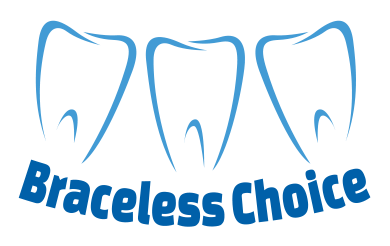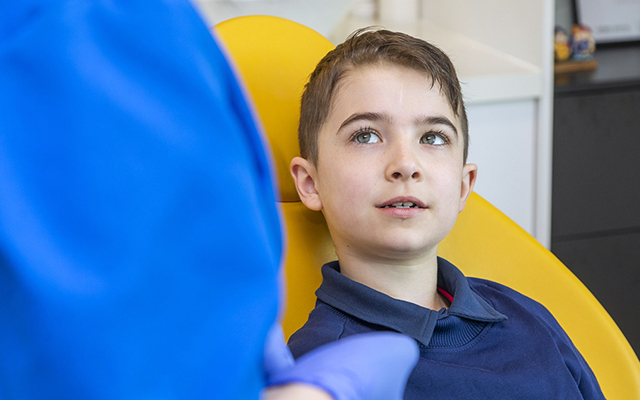
For Kids
We believe that every child has the potential to grow straight teeth. Crooked teeth are a symptom, not the cause of the problem.
Our goal is to avoid the unnecessary extractions of permanent teeth, avoid surgery if possible and correct oral muscle function. In doing so, this protects the facial profile and airways, as well as giving children the self-confidence that comes with a beautiful, healthy smile.
We like to offer patients and their parents a choice to start early and have a braceless option to treat crooked teeth. The best results are achieved when small problems are managed before they become bigger issues. Hence our early interceptive dental treatment can start as early as the child is ready for it (around 5 years old).
We treat our little patients as if they were our own children, only applying treatment methods which we would use for our own kids.
PROBLEM
Modern research has shown that crowded teeth, underdeveloped jaws and other orthodontic problems are caused by mouth breathing, tongue thrust, reverse swallowing and incorrect myofunctional habits such as finger or thumb sucking or nail biting.
Allergies, asthma and open mouth posture also contribute to incorrect jaw development.
Some common symptoms to look out for are:
Crooked teeth, malocclusion (“bad bites”)
Malocclusion includes teeth overcrowding, misalignment, crossbites and over or under bites. People with teeth that are not properly aligned may have difficulties with biting and chewing food, and may develop speech problems such as lisping. Malocclusion can also have serious oral health complications, due to the difficulty with cleaning and protecting crooked teeth from decay and gum disease.
Mouth breathing
Correct breathing during childhood is crucial, as this positions the tongue to push on the palate throughout the day, allowing the palate to grow to the correct size, shape and position. It won’t do this if a child mouth breathes.
Mouth breathing is directly related to many upper respiratory tract infections, especially ear, nose and throat, inflamed tonsils, adenoids and sinuses. This is because mouth breathing bypasses the air filtration system within the nose, allowing untreated air containing viral and bacterial matter directly into the sensitive lung passages.
Constant mouth breathing also reduces amount of the saliva and alters its pH, removing some of its antibacterial effect, so that a person becomes more susceptible to tooth decay and gum disease.
Speech problems
The tongue is an extremely important muscle for speech development and its restriction can result in speech problems.
Tongue-tie (ankyloglossia) is a congenital oral anomaly that may decrease mobility of the tongue tip or its body, and is caused by an unusually short, thick lingual frenulum – a membrane connecting the underside of the tongue to the floor of the mouth. Tongue tie restricts upper jaw development, affecting the pronunciation of the words. It is often thought to be a condition where we are too anxious or excited to speak, but it can be due to a physical problem, restricting the movement of the tongue.
Crooked teeth or an incorrect bite (malocclusion) can also cause speech problems, most noticeably lisping.
Nocturnal bed-wetting
Bed-wetting or nocturnal enuresis occurs during sleep and is common amongst children with sleep apnoea or other conditions that make it difficult for them to breathe freely through their nose. It is thought that a lack of oxygen could decrease the production of an anti-diuretic hormone, affecting the smooth muscles (of the bladder) by responding with spasm to the reduced oxygen level, i.e. an inability to hold on. It has been shown that restoring a child’s ability to breathe through the nose while sleeping can reduce or eliminate the symptoms of sleep apnoea, including nocturnal enuresis.
Grinding or clenching of teeth
Grinding teeth during the sleep, or nocturnal bruxism in children, is a symptom of obstructed upper airways called Sleep Disordered Breathing (SDB)– one of the forms on the Obstructive Sleep Apnoea (OSA)spectrum.
Teeth grinding is one of the natural reflexes that is triggered to wake a person up in the event of hypercapnia (abnormally elevated carbon dioxide (CO2) levels in the blood) to increase breathing and access to oxygen. It is important to treat the underlying breathing problem, as failure of this reflex can be fatal (e.g. it is a contributory factor in SIDS (Sudden Infant Death Syndrome).
Dental signs of grinding are extreme tooth wear and evidence of cheek bitting.
Finger or thumb sucking
Very young children often suck their thumb or fingers for comfort, and while this habit might seem harmless, it can cause considerable damage to the facial bones of a child if it continues beyond the age of 4. Young bones are quite soft and easily distorted and if a thumb, finger or dummy sucking habit persists after their primary teeth have erupted, it can change the shape of the jaws, causing significant problems with the way teeth are aligned.
Sleep problems (OSA) or snoring
Snoring in children is a clear indication that the airway is partially obstructed and is called Sleep Disordered Breathing (SDB),which if not treated leads to Obstructive Sleep Apnoea (OSA)in adult life. One very common reason that children can snore is if their upper jaw is underdeveloped, creating a smaller airway that is more easily blocked during sleep. This is because the lower jaw drops backwards during sleep, resulting in the tongue being pulled in the same direction. The tongue can partially block the airway, leading to a child snoring or frequently gasping for breath while asleep.
Chronic ear problems or infections
Young children can frequently suffer from ear problems, where the inner ear becomes inflamed – a condition called otitis media. This can be associated with learning disabilities, hearing loss and secondary nervous system complications. It’s quite common for patients with inner ear dysfunction to have dental disorders; this may be caused by an incorrect dental bite (deep bite, overbite).
It’s also possible for teeth grinding to put pressure on the temporomandibular joints, which can lead to these joints becoming inflamed. This in turn can increase the risk of ear inflammation.
SOLUTION
Early intervention dental treatment allows children to develop well-balanced facial structures with better tooth alignment, and helps them reach their full growth potential.
The best results are achieved when small problems are managed before they become bigger issues. In fact, the ideal age to start treatment is between 5-9 years of age – long before regular orthodontic treatment is considered.
In our practice we focus on identifying the cause of your child’s problem and addressing it with the most appropriate treatment.
We start with a thorough assessment of the general and dental health of your child.
Your child’s treatments will include:
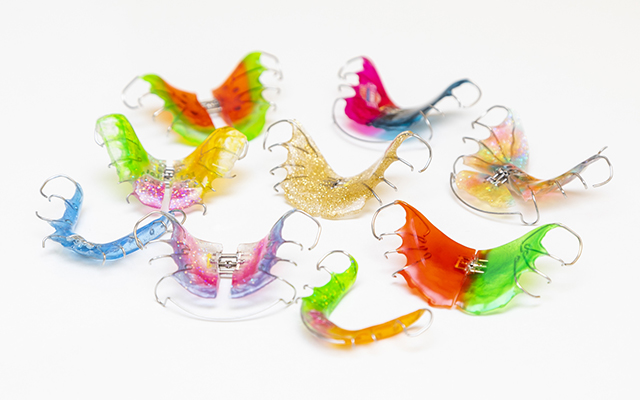
Functional jaw orthopaedics using removable appliances (plates)
In cases where expansion of the upper jaw is required, we will use Functional Jaw Orthopaedics (FJO) using removable appliances (plates). This is a process which helps ensure the jaws are the right size and shape, and properly positioned so the bones in the skull will be correctly aligned.
FJO is able to treat the teeth and jaws at a very early stage and may avoid the need for wearing conventional braces. Specialised techniques are used to manage jaw growth and development, and to correct deformation, providing beautiful, healthy smiles that will give an optimal level of functionality.
Removable appliances can help correct problems while children still have their baby or mixed teeth in place. They are easily taken out by the patient, or by their parents or caregivers to provide good hygiene.
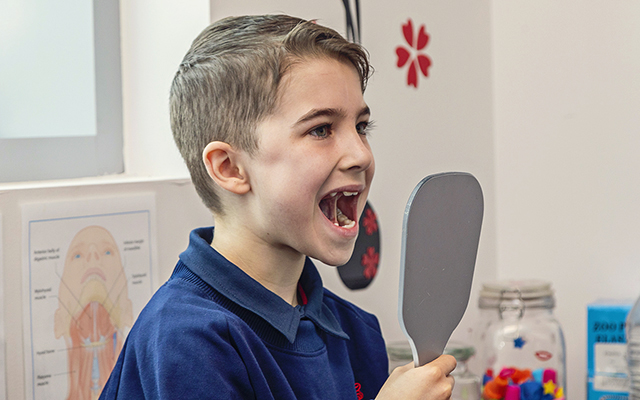
Myofunctional therapy
Myofunctional therapy treats facial muscle imbalances, correcting tongue posture and tongue thrusting habits, incorrect swallowing patterns, thumb sucking and open mouth posture. Specially designed exercises help to strengthen the appropriate muscles and can help aid the normal development of the teeth and jaws.
The therapy can involve exercises only, or may be used in combination with a trainer appliance.
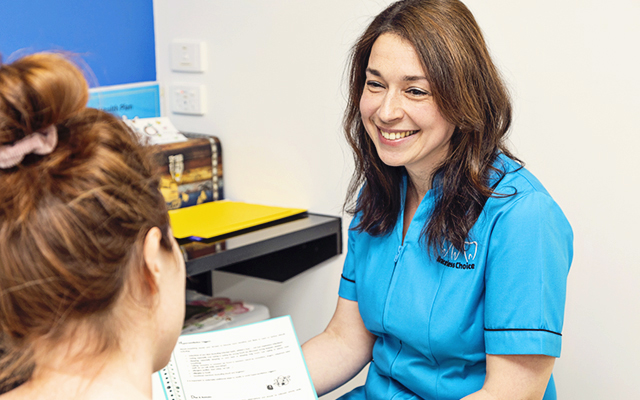
Breathing re-training using Buteyko technique
The Buteyko Breathing Technique is a specific set of breathing exercises and techniques that are designed to correct dysfunctional breathing by changing unhealthy breathing habits such as mouth breathing. Buteyko is most widely known as a method for controling and reducing asthma and hyperventilation, and promoting nasal breathing which helps to reduce snoring and sleep apnoea.
Retraining mouth-breathers to nasal-breathers also improves the position of the tongue to one that enhances proper jaw and palate development, thus improving the effectiveness of other early intervention dental treatments.
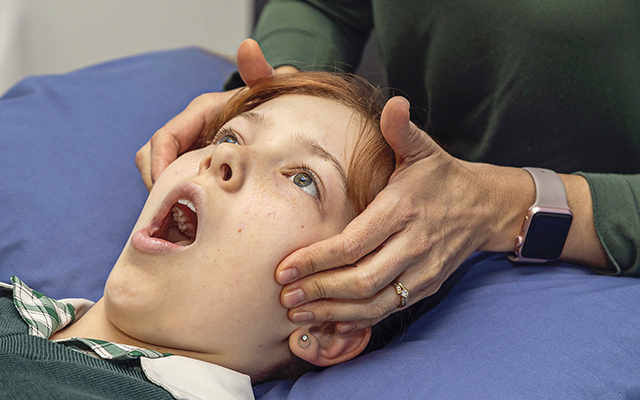
Osteopathic treatments
The posture of a child’s head, neck and spine can affect the posture of the jaw, the tongue and the way the bones of the face grow. Residual effects of birth strain, childhood injuries and falls, and poor habits can potentially affect a child’s current posture, with flow-on effects to the development of the jaws and ultimately the position of the teeth.
An osteopath is trained to examine, assess, identify and treat the musculoskeletal components of a growing child. Identifying any subtle postural issues and treating them early can complement and enhance the progress of a child’s dental treatment plan.
Osteopathic treatment is safe, gentle and effective and does not involve any joint manipulation.
RESULT
By treating faces rather than just teeth at an early age, while they still have years of growth ahead of them, we can avoid complications of braces and extractions in their later years. Extractions of permanent teeth may lead to OSA in adulthood.
Children will benefit from teeth and jaws that function correctly, minimize upper airway restriction and respiratory problems, and improved sleep patterns, which in turn affect concentration, learning abilities and behaviour.
Plus they’ll enjoy having a beautiful smile and pleasing profile for life, increasing their self-esteem and self-confidence.
Together we can give your child a great start in life.
To find out whether Braceless Choice can help your child, please get in touch today.

Check if your child will benefit from our treatment
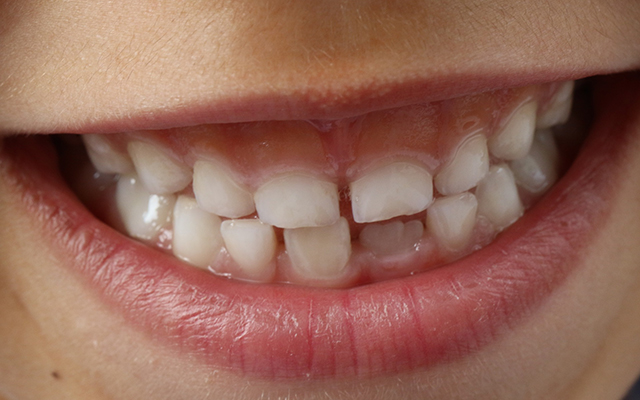
Simply fill in this form and upload two photos clearly showing your child's smile – one front on and one in profile. We will then be in touch to let you know whether our brace-free treatment methods can work for your child.
